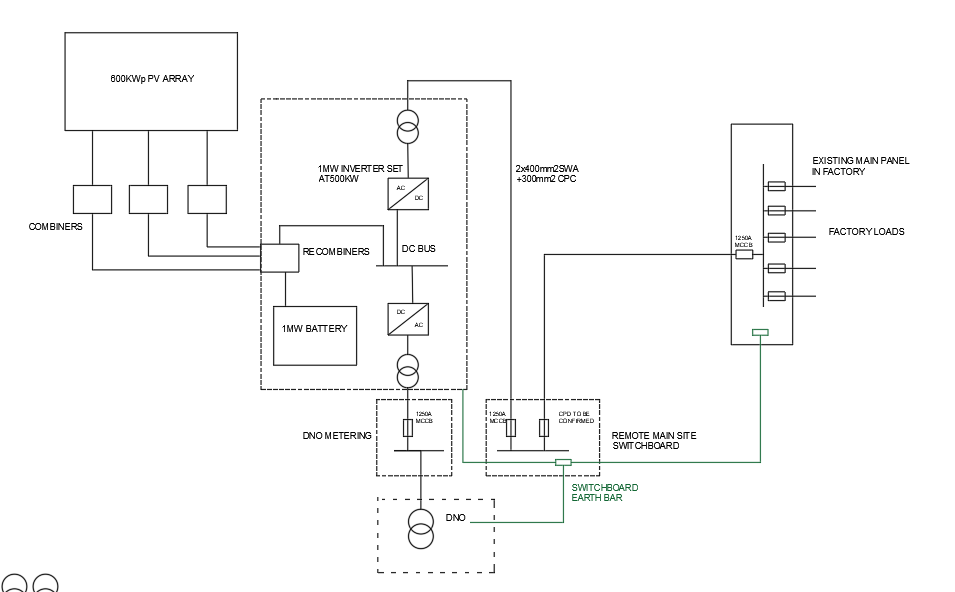I guess I am going to need to recognise that the relatively simple electrical installations with just a DNO source and perhaps a back up genny that I have been used to will become an increasingly distant memory. Perhaps for some, the diagram below is meat and potatoes but for me wrestling with it in a practical way on site during a periodic inspection is not an easy task. Last time I was on this site, around five years ago, the DNO supply and metering were directly connected to the main switchboard at the lower right hand side of the diagram. Now re-directed into a metering cabinet and then to a loose arrangement of plant tightly packed which also includes the 1MW battery.
Establishing Ze and Ipf is a tad more convoluted! I assume the output transformer is referenced to earth and uses the DNO earth for that purpose.
